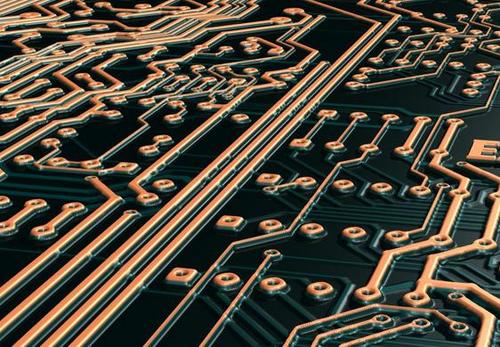Due to the small size and size, there is almost no ready-made printed circuit board standard for the growing smart wearable IoT market. Before these standards came out, we had to rely on the knowledge and manufacturing experience learned in board-level development and think about how to apply them to unique emerging challenges. There are three areas that require our special attention. They are: PCB board surface materials, radio frequency/microwave design and radio frequency transmission lines.

PCB material
PCBs are generally composed of laminates, which may be made of fiber-reinforced epoxy resin (FR4), polyimide, or Rogers materials or other laminate materials. The insulating material between the different layers is called a prepreg.
Smart wearable devices require high reliability, so when teachers are faced with the choice of using FR4 (the most cost-effective PCB manufacturing material) or more advanced and more expensive materials, this will become a problem.
If smart wearable PCB applications require high-speed, high-frequency materials, FR4 may not be the best choice. The dielectric constant (Dk) of FR4 is 4.5, the dielectric constant of the more advanced Rogers 4003 series material is 3.55, and the dielectric constant of the brother series Rogers 4350 is 3.66.
The stackup diagram of the multilayer circuit board, showing the FR4 material and Rogers 4350 and the thickness of the core layer.
The dielectric constant of a laminate refers to the ratio of the capacitance or energy between a pair of conductors near the laminate to the capacitance or energy between the pair of conductors in vacuum. At high frequencies, it is best to have a small loss, therefore, the dielectric coefficient is 3. Roger 4350 of 66 is more suitable for higher frequency applications than FR4, which has a dielectric constant of 4.5.
Under normal circumstances, the number of PCB layers for smart wearable devices ranges from 4 to 8 layers. The principle of layer construction is that if it is an 8-layer PCB, it should be able to provide enough ground and power layers and sandwich the wiring layer in the middle. In this way, the ripple effect in crosstalk can be kept to a minimum, and electromagnetic interference can be significantly reduced.
In the circuit board layout design stage, the layout plan is generally to put a large ground layer close to the power distribution layer. This can form a very low ripple effect, and the system noise can also be reduced to almost zero. This is especially important for the radio frequency subsystem.
Compared with Rogers material, FR4 has a higher dissipation factor (Df), especially at high frequencies. For higher performance FR4 laminates, the Df value is around 0.002, which is an order of magnitude better than ordinary FR4. However, Rogers' stack is only 0.001 or smaller. When FR4 material is used for high frequency applications, there will be a significant difference in insertion loss. Insertion loss is defined as the power loss of the signal from point A to point B when using FR4, Rogers or other materials.
Manufacturing problem
Smart wearable PCBs require stricter impedance control. This is an important factor for smart wearable devices. Impedance matching can produce cleaner signal transmission. Earlier, the standard tolerance for signal carrying traces was ±10%. This indicator is obviously not good enough for today's high-frequency and high-speed circuits. The current requirement is ±7%, and in some cases even ±5% or less. This parameter and other variables will seriously affect the manufacturing of these smart wearable PCBs with particularly strict impedance control, thereby limiting the number of merchants that can manufacture them.
The dielectric constant tolerance of the laminate made of Rogers UHF materials is generally maintained at ±2%, and some products can even reach ±1%. In contrast, the dielectric constant tolerance of the FR4 laminate is as high as 10%. Therefore, compare These two materials can be found that Rogers' insertion loss is particularly low. Compared with the traditional FR4 material, the transmission loss and insertion loss of the Rogers stack are half lower.
In most cases, cost is the most important. However, Rogers can provide relatively low-loss high-frequency laminate performance at an acceptable price. For commercial applications, Rogers can be made into a hybrid PCB with epoxy-based FR4, some of which are made of Rogers material, and other layers are made of FR4.
When choosing a Rogers stack, frequency is the primary consideration. When the frequency exceeds 500MHz, PCB designers tend to choose Rogers materials, especially for RF/microwave circuits, because these materials can provide higher performance when the traces above are strictly controlled by impedance.
Compared with FR4 material, Rogers material can also provide lower dielectric loss, and its dielectric constant is stable in a wide frequency range. In addition, Rogers material can provide the ideal low insertion loss performance required by high frequency operation.
The Coefficient of Thermal Expansion (CTE) of Rogers 4000 series materials has excellent dimensional stability. This means that compared with FR4, when the PCB undergoes cold, hot and very hot reflow cycles, the thermal expansion and contraction of the circuit board can be maintained at a stable limit under higher frequency and higher temperature cycles.
In the case of mixed stacking, it is easy to use common manufacturing process technology to mix Rogers and high-performance FR4 together, so it is relatively easy to achieve high manufacturing yield. The Rogers stack does not require a special via preparation process.
Ordinary FR4 cannot achieve very reliable electrical performance, but high-performance FR4 materials do have good reliability characteristics, such as higher Tg, still relatively low cost, and can be used in a wide range of applications, from simple audio design to Complex microwave applications.